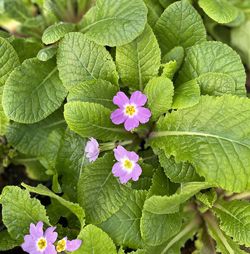Rudbeckia
Black-Eyed Susan
Named by Linnaeus in honor of his teacher Olaf Rudbeck, this North American genus includes 25 to 30 species, many of them famous summer and late season bloomers. These easily grown selections promise to brighten borders and naturalized meadows plus make dandy additions to bouquets. Offering late fall and winter interest, they combine well with Asters, Eupatoriums and grasses.
Rudbeckia laciniata ‘Goldquelle’ (P-1552)
OUT OF PRODUCTION AT THIS TIME
Email me when this plant is available
This Rudbeckia’s sassy Dahlia-like mop of double lemon-yellow flowers promises to put a smile on your face. Perched atop wiry upstanding stems and handsome narrow-lobed green leaves, the shapely chartreuse-eyed daisies bloom for a long time, while creating a dramatic medium-sized counterpoint to Aconitum ‘Bressingham Spire’s vertical blue-violet shafts.
Blooms mid-July – September.
Size: 2-1/2' – 3' 0" high x 2' 0" wide.
Hardy to zone 4.
Please fill out our Registration Form to receive news of updates to the web site, availability of new plants, give us your feedback, and to be on the mailing list to receive future printed catalogs.
Other selections in this genus:
- Rudbeckia ‘American Gold Rush’
- Rudbeckia fulgida var. deamii
- Rudbeckia fulgida speciosa (Newmanii)
- Rudbeckia fulgida ‘Swiss Gold’
- Rudbeckia fulgida var. speciosa ‘Viettes Little Suzy’
- Rudbeckia grandiflora ‘Sundance’
- Rudbeckia occidentalis ‘Green Wizard’
- Rudbeckia paniculata
- Rudbeckia subtomentosa
- Rudbeckia subtomentosa ‘Loofahsa Wheaten Gold’
- Rudbeckia triloba ‘Prairie Glow’










